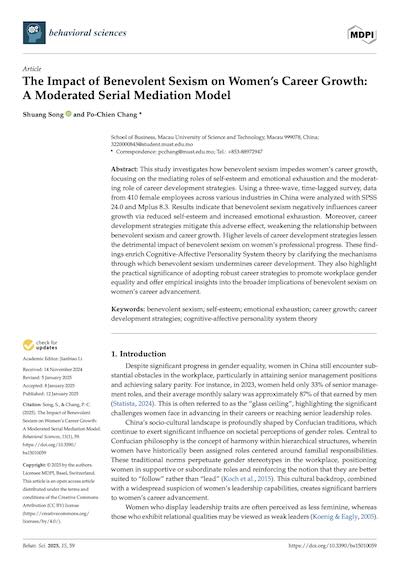Today's article comes from the journal of Behavioral Sciences. The authors are Song et al., from the Macau University of Science and Technology, in China. In this paper they explore what benevolent-sexism is, how it works, why it might be hard to spot, and what (if anything) we can do about it.
DOI: doi.org/10.3390/bs15010059


You must be an active Journal Club member to access this content. If you're already a member, click the blue button to login. If you're not a member yet, click the sign-up button to get started.
Login to My Account
Sign Up